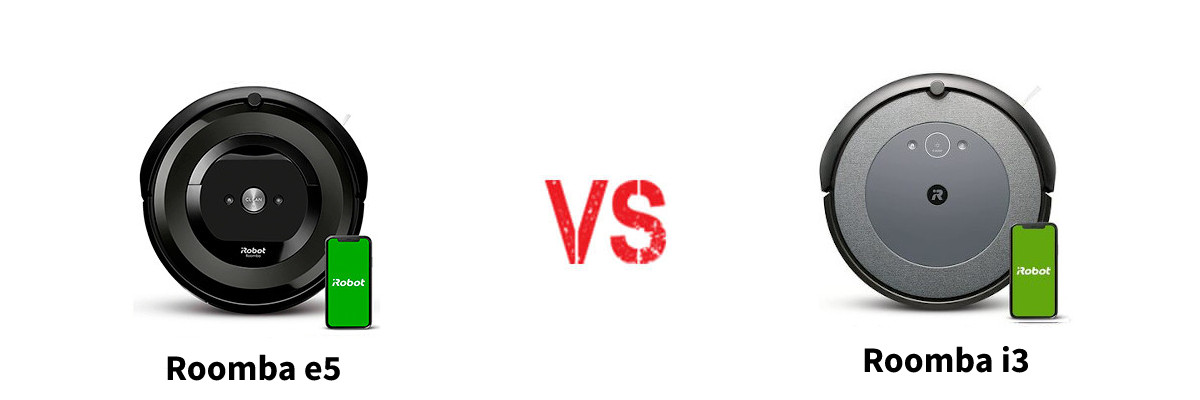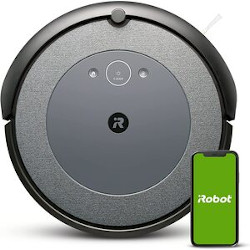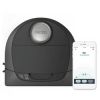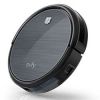iRobot Roomba e5 review
Feb 10, 2021
The Roomba e5 is an entry-level robot vacuum that is designed to clean bare floors and carpets of all types and pile heights. This model features a seamless performance without remarkable smart optio...
Read more
This Roomba E5 vs i3 comparison is dedicated to two budget-friendly robotic cleaners from the Roomba line. They both are suitable for the vast majority of casual cleaning cases, are equipped with dirt and cliff detecting sensors, can clean on most types of floor surfaces, are compatible with voice assistants (Amazon Alexa and Google Assistant), and can be controlled via smartphone. The main difference between these models lies in their navigation systems: the i3 moves logically in neat rows while the E5 has a random cleaning pattern and changes its direction as it bumps into objects.
When it comes to the Roomba i3 vs E5 suction level comparison, both models are nearly the same at this comparison point. The i3 has a suction level of 1800 Pa while its competitor has a slightly worse suction performance of 1700 Pa. However, this difference is barely noticeable in practice.
It doesn’t make sense to compare the iRobot E5 vs i3 dustbin capacity as both robots come with a 500ml dustbin. So, if you are not going to set your vac for cleaning several times per day, you can forget about emptying it for a couple of weeks.
In this part of the E5 vs i3 Roomba comparison, these models are also identical: they both can cover an area of around 2000 – 2100 square feet. Nevertheless, the E5 has slightly better battery life than the i3 (97 minutes versus 87 minutes), so it naturally can cover more during one run.
Checking the i3 vs E5 Roomba noise level, it should be mentioned that compared models aren’t so powerful to emit a lot of excessive noise. Our test has shown that the E5 has a noise level of 65 dB while the i3 has 63 dB. This means that these vacs aren’t noisy and won’t irritate you during cleaning.
The iRobot i3 vs E5 carpet cleaning performance comparison has shown similar results. Both cleaners come supplied with the same multi-surface rubber extractors instead of standard brushes. These extractors cope with cleaning carpet surfaces much better than bristle brushes do. Moreover, they are tangle-resistant and require minimum maintenance.
It’s hard to tell how much dirt each model picks up from the carpet surface by eye; both have done a fairly good job in cleaning powder, sand, pet fur, and crumbs from the carpet surface.
It should be noted that the i3 seems to have better maneuverability, so it deals with long-pile carpets better than the E5. Besides, the i3 also adjusts to the carpet’s height automatically while the E5 doesn’t have such a feature.

Feb 10, 2021
The Roomba e5 is an entry-level robot vacuum that is designed to clean bare floors and carpets of all types and pile heights. This model features a seamless performance without remarkable smart optio...
Read more
Feb 27, 2023
The modern Roomba i3 robot vacuum cleaner is manufactured by iRobot, a leading company in the robot cleaning market. The vacuum cleaner automatically cleans bare and carpet floors, using voice comman...
Read moreThe iRobot Roomba e5 is better robot vacuum in this comparison. Check iRobot Roomba e5 price



